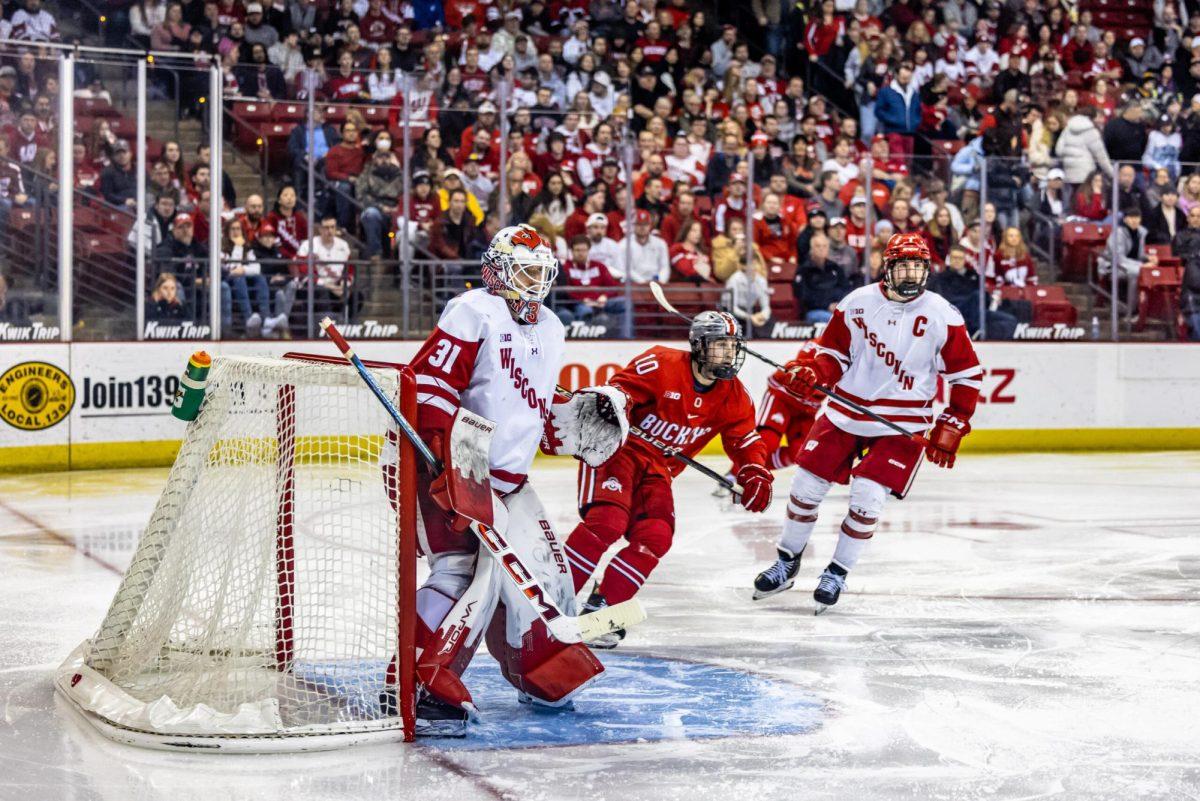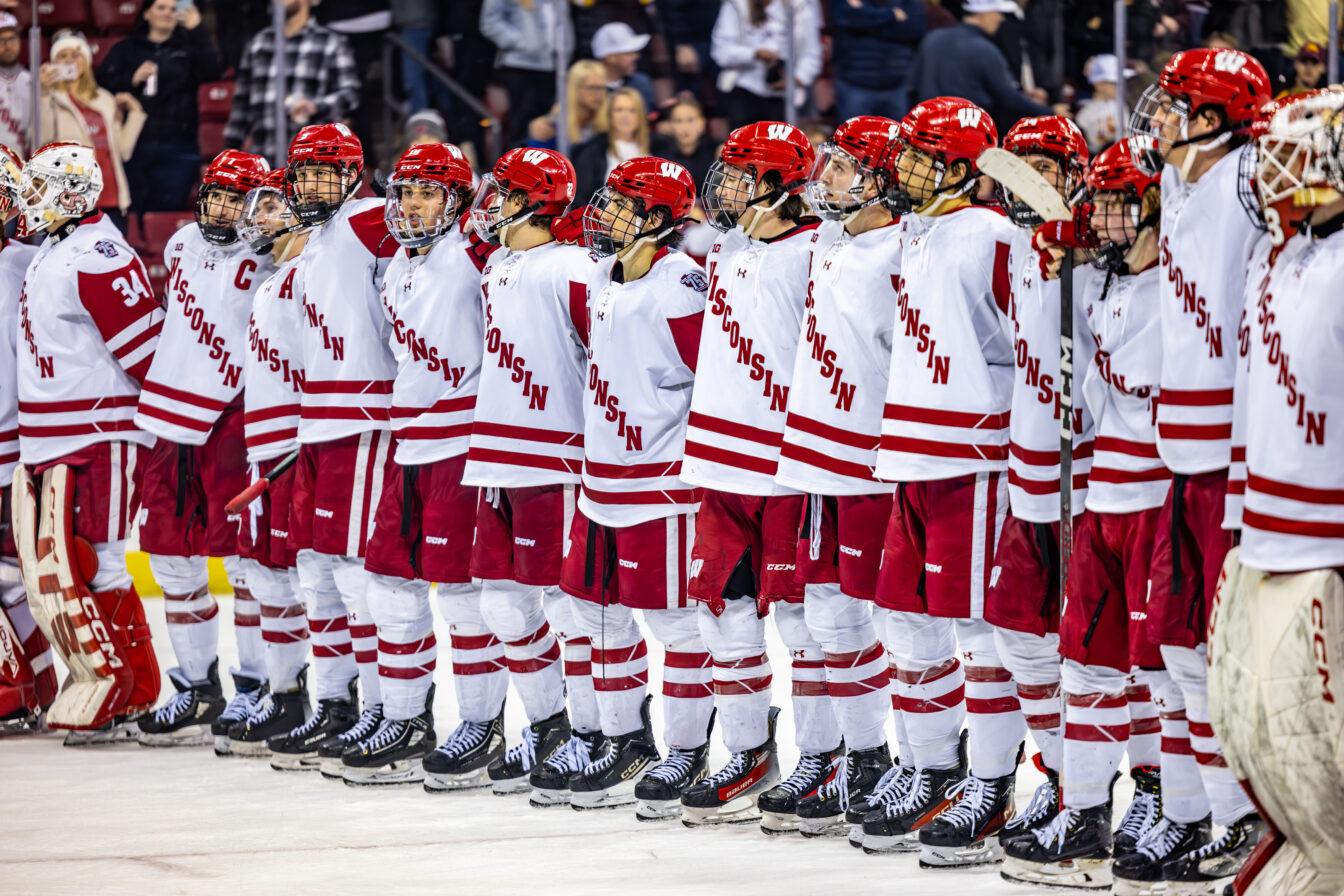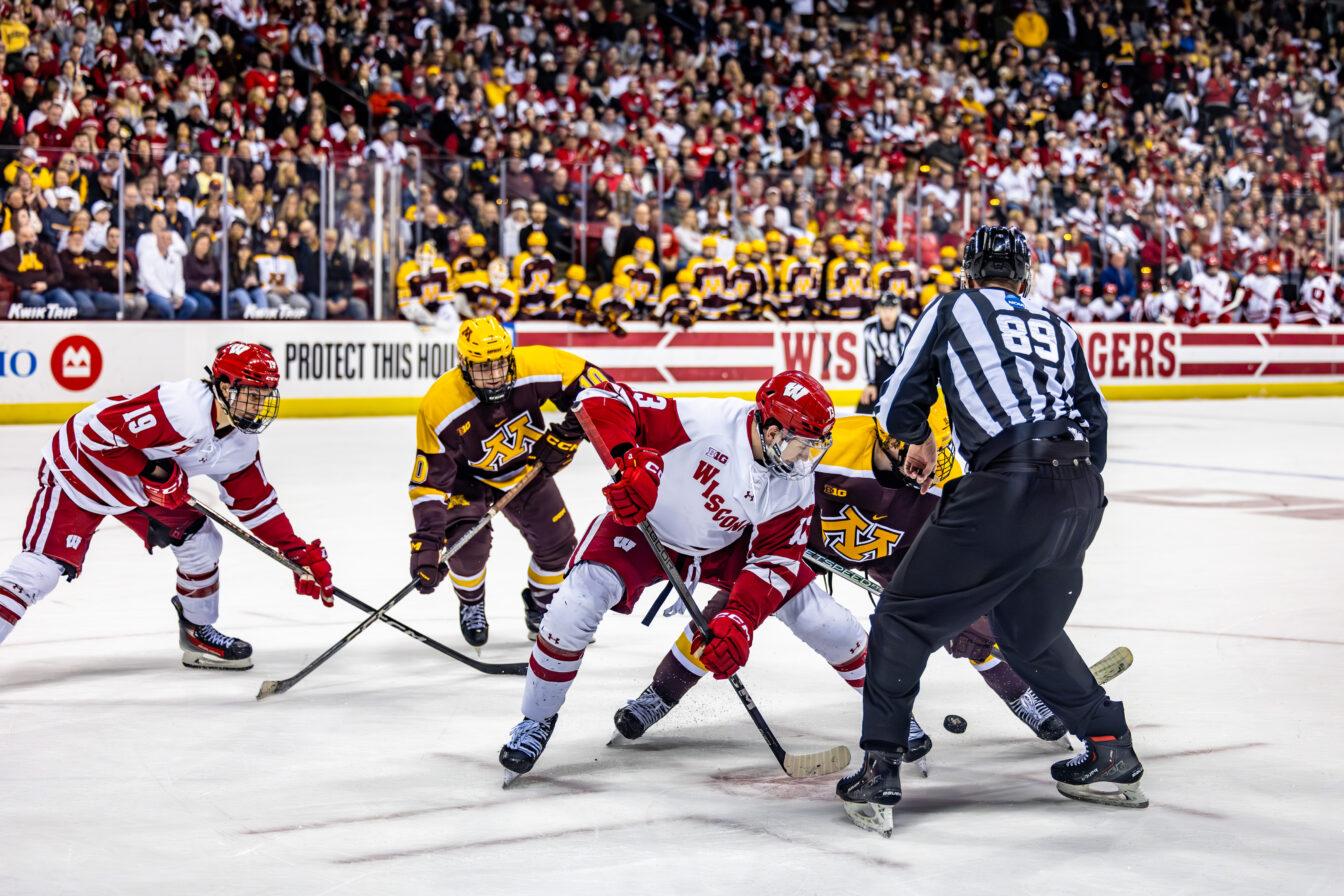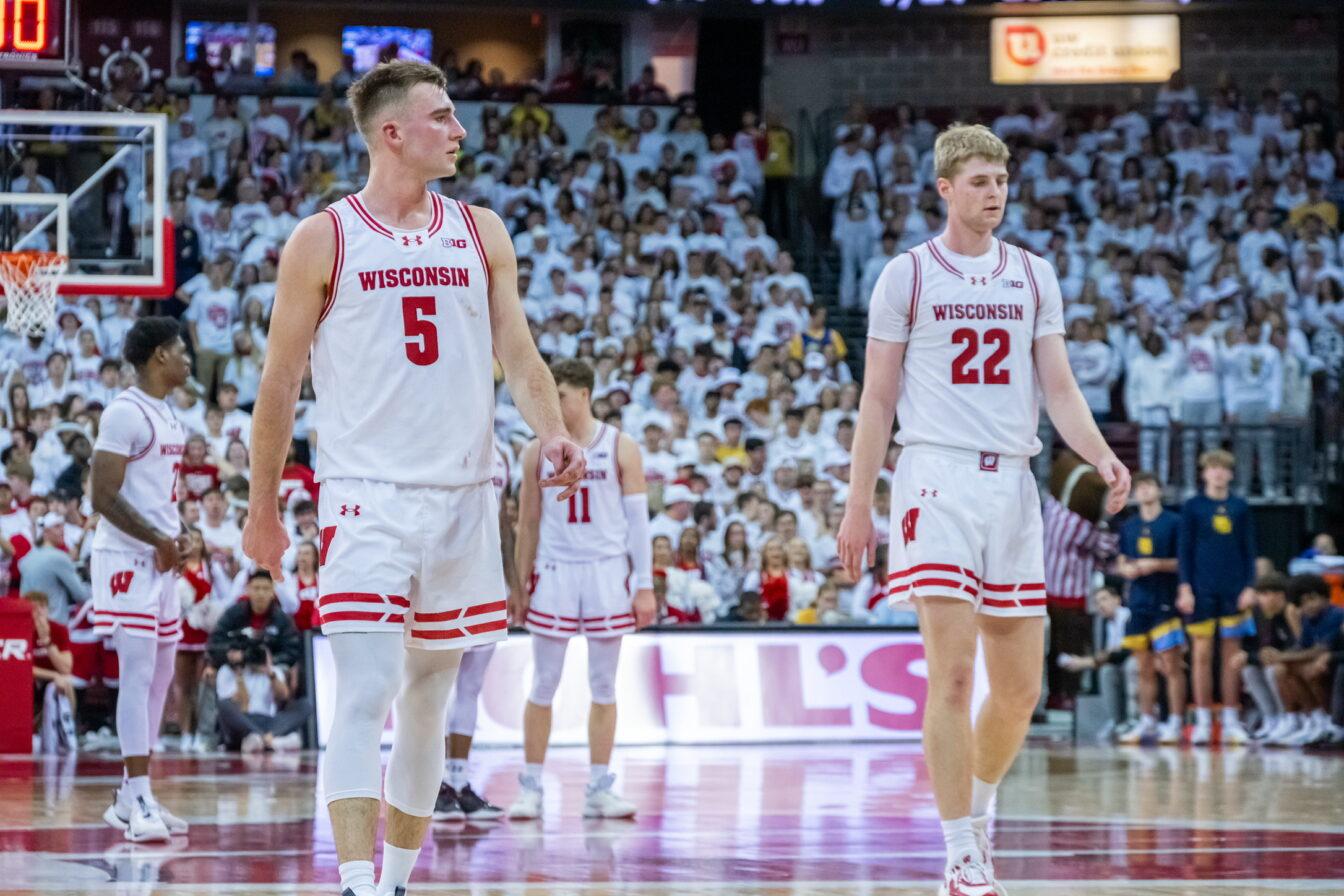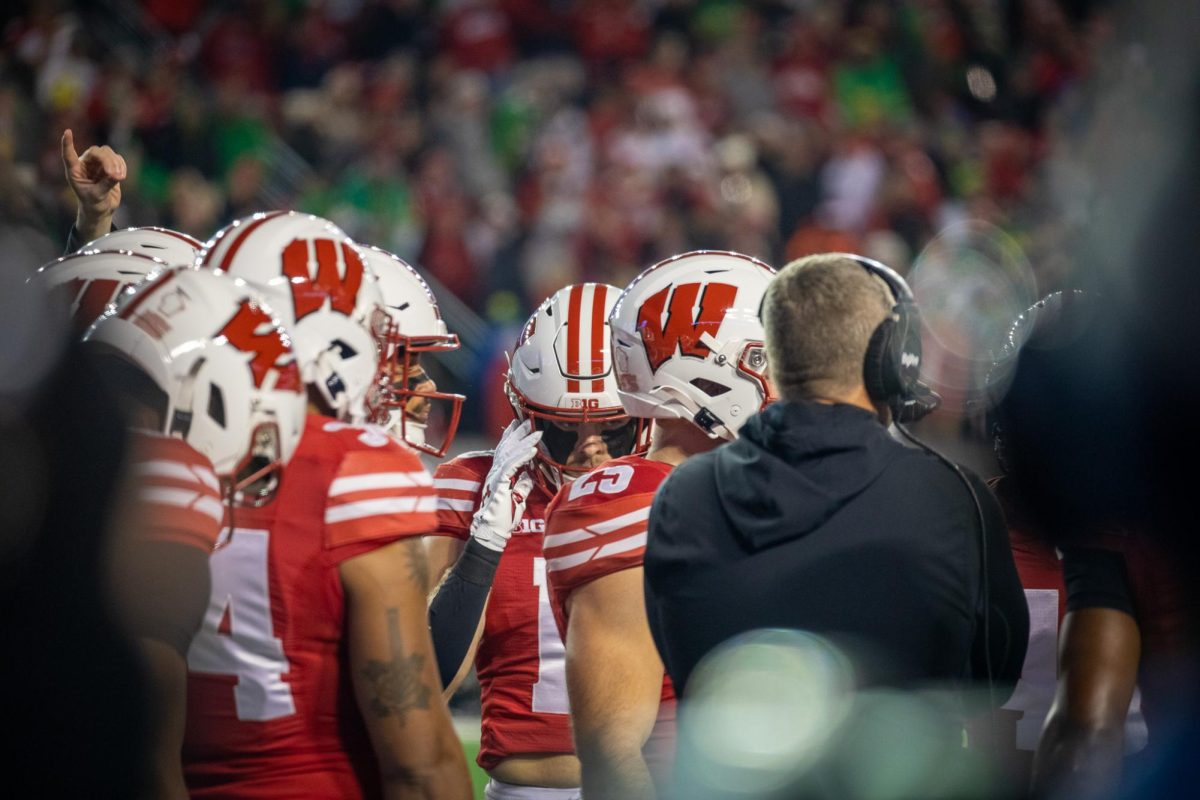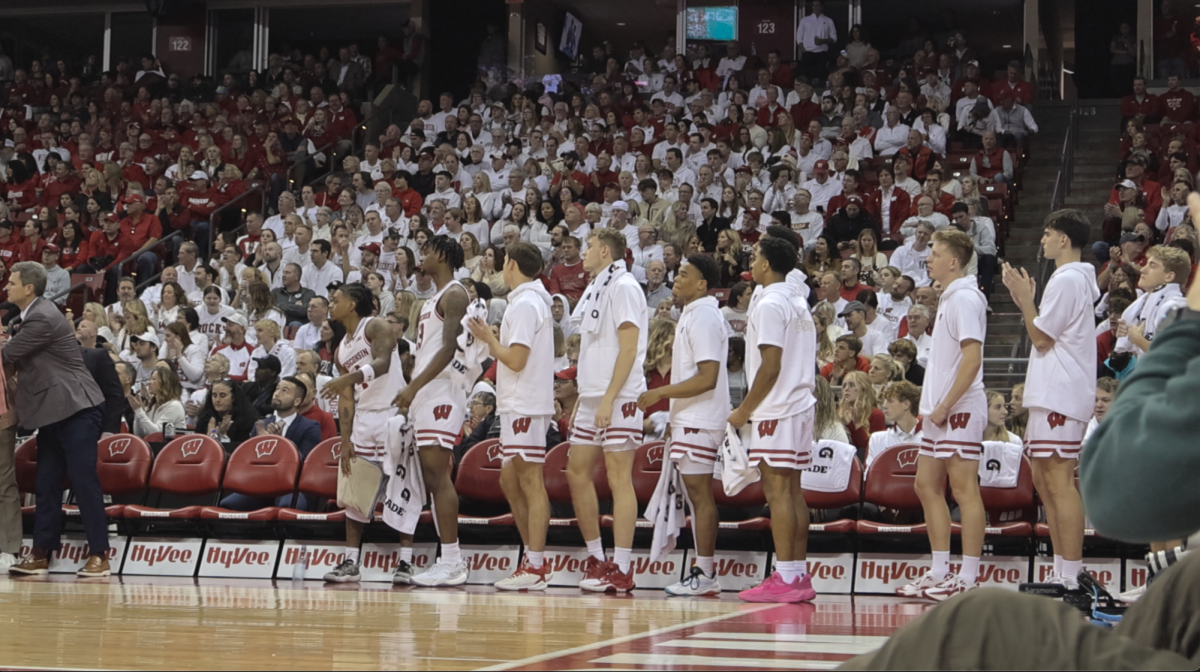
Some might say it was gutsy. Others might call it crazy. Mike Eaves would call it growth.
Entering a series with border rival Minnesota, the Wisconsin head coach decided to shuffle around his defensive pairings. At the top, he had junior Jake Gardiner and sophomore Justin Schultz, two of his experienced players, two skaters with great offensive skill. Behind them were senior Craig Johnson and sophomore John Ramage, solid stay-at-home defensemen. That left the last pair, a duo of freshmen, Frankie Simonelli and Joe Faust.
Going into Mariucci Arena with two rookies making up one of your defensive pairings could be a death wish against a Gophers team featuring 19 NHL draft picks.
In reality though, it was exactly what Eaves wanted: growth.
“The best way to build confidence is experience,” Faust said. “To have a good weekend like we did helps. I thought me and Frank played pretty well together.”
Simonelli and Faust both went plus-2 in Friday’s 6-0 win, and both were even in Saturday’s 3-3 overtime tie. Before the series, Eaves said he wasn’t sure how often the two would be on the ice together. But despite worries about having to shift his defensive pairings mid-game, Eaves was able to let things finish as they began on his lineup card.
“We kind of went with them these past two weekends to kind of see what we had a little bit,” he said of the two. “So far, we like what we’re seeing.”
It’s interesting to note both rookies are playing as “true” freshmen. Faust came straight from high school, finishing his senior season at Bloomington-Jefferson in Minnesota, while Illinois-native Simonelli just turned 18 in October, coming from the U.S. national development program in Ann Arbor, Mich. In college hockey, freshmen can range anywhere from 17 to 21 years old – as UW forward Mark Zengerle is – due to playing a year or two of junior hockey before making the transition to NCAA hockey.
Often, the biggest thing holding a potential freshman back is his size; because some rookies come in at 21 years old, they’re up to 24 years old as seniors. The physical difference between an 18 and 24-year old varies, but it’s often enough to relegate the youngster to a few years of junior to bulk up, or to the bench of a college team.
That’s not the case with Faust and Simonelli. Faust is listed at 5-foot-11, 196 lbs., while Simonelli is 5-foot-10 and 200 lbs. Simonelli endured an intense regimen of strength training with the national team, the lack of which he thinks would affect where he is now.
“I would have been behind. I don’t know if I’d have been in the lineup,” he said.
Fellow freshman defenseman Chase Drake is more seasoned, turning 21 in December, but is just 175 lbs. That’s a big part of why Faust and Simonelli are the freshman defensemen getting ice time.
“For Chase, it’s his strength factor, being to be strong and contain people on the defensive boards,” Eaves said.
And while the two have the physical elements to play, they’ve shown the coaching staff more than just size. Both played during the year, one paired with Johnson while the other was paired with Schultz. The prospect of being paired together wasn’t daunting, though.
“We had talked about it a couple previous weeks before that… he asked if I was comfortable playing with Joe,” Simonelli said. “We had a long week of practice together.”
“I wouldn’t say I was really surprised. But it was definitely fun to get to see that,” Faust said.
Despite their arguments otherwise, it’s still a gutsy move to pair two freshmen together. The Badgers’ blueliners aren’t strangers to playing well with rookies; Schultz and Ramage were freshmen last season, and UW made it to the national title game. But they haven’t had to worry about a situation that arose for a few shifts in Minneapolis – having five freshmen on the ice at the same time.
Wisconsin matched a season-high with seven freshmen in the lineup for the weekend’s games, including an all-rookie fourth line.
“I don’t think you hear about it too much when you have two freshmen playing together,” Schultz said. “The first weekend playing together and they come into a tough rink in Minnesota and play like that. That was part of our success this weekend for sure.”
It could end up being a part of the Badgers’ success the rest of the way, as well. Playing freshmen isn’t a luxury for UW, it’s a necessity. The end result of the season hinges on how well – and how consistently – the rookies perform.
Last season, Colorado College made a surprise run through the WCHA season despite a very young lineup. But the Tigers faded down the stretch, with 13 of their 17 losses coming after New Year’s.
The big thing the coaching staff wanted was consistency, and Eaves was pleased with his team playing consistently for two series after an up-and-down first road trip to Denver in October. With visits coming from two of the top teams in the WCHA in North Dakota and Minnesota-Duluth, this stretch of play could very well determine how much longer Faust and Simonelli are paired together – and what kind of season UW is looking at in general.
“I’m excited to see them play again, against NoDak. They played against a fast pace, and they played in a very intense game Saturday – and they did fine,” Eaves said. “That’s good growth. Hopefully they’ll be able to take that experience and springboard into the series with North Dakota and have the same type of games for themselves.”


